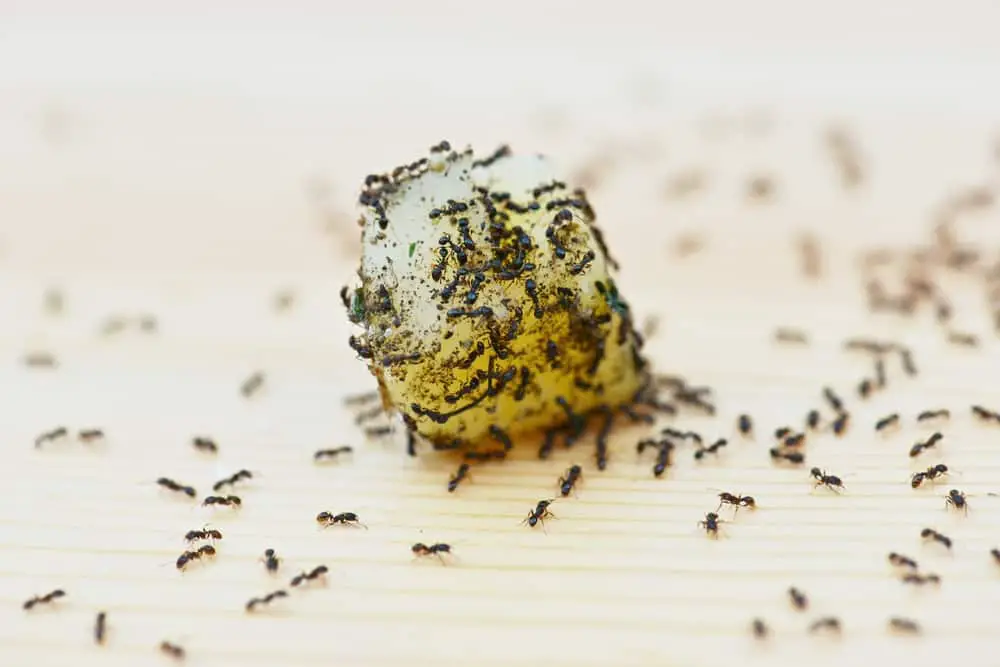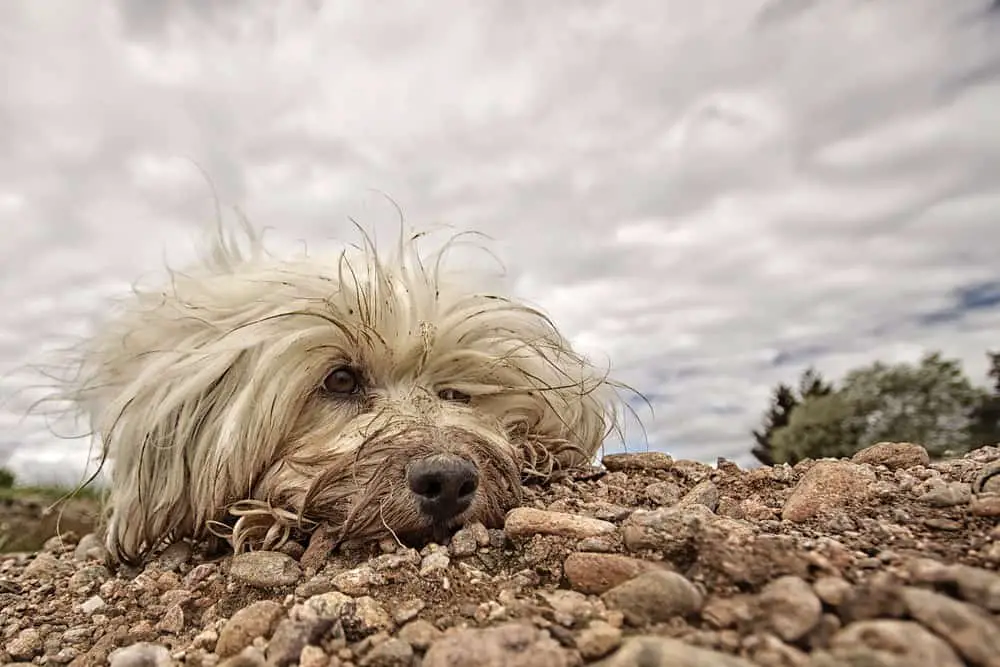No matter how clean we try to keep our pets, they always seem to find the dirtiest place to stop and lay down. Most of these places are outside of the normal tidy areas of our home and garden and tend to be crawling with ants and other insects.
But just because our pets are inhabiting the same space as ants and other pests doesn’t mean that they are actually crawling onto our pets, does it? And if they are getting on our cats, dogs, and other furry friends, is that enough to bring insects inside? Read on to find out.
Can Pets Carry Ants Inside?

It is possible for pets to carry ants and other insects into the house. Long-haired dogs and cats are the most likely to accidentally allow some hitchhikers into their coats. The carbon dioxide exhaled by our pets can also attract other pests that seek out animals.
Pets can be targeted by pests like mosquitos, fleas, ticks, flies, and other bugs. Whether the adult mosquitoes or adult female fleas or ticks, these pests will cling onto your pets for a blood meal so they can breed. Pets hanging out near windows, doors, and on open porches can attract adult forms of pests that are looking to mate or feed.
Pets can carry ants and termites, and other insects that grab onto things that move through their nests. These insects can be carried inside unknowingly and unintentionally. Pets also attract their own pests that look for easy access to pet food, water, and pet waste. Pets will bring ants and many other creepy crawlies inside, so it is important to know exactly what pests you may encounter and how to deal with them.
Pests Pets Can Bring into Your Home
| Pest | How Your Pets Carry Them Inside | What Pests Do Inside |
| Ticks | They drop from trees and bushes | Stay on pets and drink blood to breed |
| Termite | Cling to pets that run through nests | Find wood and plant matter to feed on |
| Flea | Jump on pets that they find using their flea senses | Drink the blood of the pet, hide and lay eggs everywhere |
| Mosquito | Fly in through a window or door near a pet or ride in on the fur | Drink the blood of the pet and then find standing water to lay eggs in |
| Fly | Hangs around pet food and pet waste flies in through any openings | Land on food and spread diseases while being annoying to humans |
| Ants | Come in to find food or cling to your pet’s fur | Locate food sources and fresh water sources and report back to the colony. |
Ticks
Ticks like the Brown Dog tick and the American Dog tick are common pests that plague house pets. These ticks seek out pets and drop on them from above. They will burrow deep into your pet’s fur and bite deeply and drink blood.
It can be hard to spot a tick until it is engorged in your pet’s blood and tick bites have the possibility to spread infectious diseases. The longer the tick is biting your pet, and the more tick bites there are, the more likely some pathogen from the tick will endanger your pet.
Use tick treatments that are safe for your pets to kill Brown Dog ticks and American Dog ticks at any life cycle stage. Once the ticks are dead, clean the house thoroughly to get rid of any eggs or other pests. Regular treatment of flea and tick killers can stop them from surviving on your pet, but research before using over-the-counter (OTC) flea and tick treatments as they can be fatal to pets.
Termites
Pets like to get under plants and hide in trees and shrubs. These are all places where pests like non subterranean termites or dry-wood termites like to live. The organic matter under the plants acts as food and housing for termites and can harbor a lot of termite activity.
Subterranean termites can be located in the crawl spaces under your house and weather stripping. These sites can have large colonies, and if your pet runs or crawls through them, they can become covered in termites and transfer them inside. Subterranean termites under a house can mean a large infestation on your property.
Sometimes pets can come across these subterranean termite sites and give warning of a possible colony. A termite monitoring advantage of your pets finding these subterranean termites early can save you tons of money by keeping them out of your house and allowing you time to get an expert to treat your yard.
The non subterranean termites and dry-wood termites can also be detected by pets that climb trees or lead you around your property. The dead or decaying plant matter can be a termite monitoring advantage showing you where possible nests are located. Then you can call in a pest control expert for termite service.
Fleas
Common fleas are quick to get on your pet and inside your house. Once inside, they can breed and multiply quickly and rapidly infest your home. An adult flea can jump high and is accurate at chasing down your pet. Once it has locked on, it can hang onto your pet’s coat and make it inside your house.
Adult female fleas drink the blood of your pet and then lay eggs. The eggs fall off and hatch wherever they land, adding another generation of fleas into your home. If the adult forms of fleas land on a pet that has been treated, they will die, and the lifecycle will end with no new eggs entering your home.
Mosquitos
Adult mosquitoes can quickly follow any mammal that is exhaling carbon dioxide. These pests can cause West Nile virus and give your dog heartworms, a potentially fatal parasite. Lifecycle stages other than adult mosquitoes will not be able to enter the house on your pet.
Adult mosquitoes will enter the house to eat or mate. Adult males try to mate with female adult mosquitoes that have had a blood meal. Keeping standing water to a minimum and giving your pets fresh water every day can reduce mosquitoes in pet areas.
Flies
An adult fly looks for fresh food to eat and lay eggs on. These flies will hang around pet areas that give them access to food. Either your pet’s meals or their waste can be dinner for flies. Make sure you remove fresh food from outdoor areas as soon as your pets are done eating it to get rid of fly magnets.
Indoor sites where animals eat or use the bathroom should have good ventilation and screens and be cleaned regularly. Flies that land on pets’ food and waste can lead to illness and cost you a bunch in medical bills. Treat indoor sites like kennels and feeding areas thoroughly with a pet-safe fly killer to prevent flies from becoming a problem.
Ants
These pests can both cling to your pet’s fur and find their own way into your home on their own. Removing food sources and cleaning around your pet’s food bowls with a vinegar solution can help keep ants at bay. Ants will leave your home if they can not find food, so your pets accidentally carrying a few in is not really an issue as long as the home is clean.
If ants are already nesting in your walls due to poor housing or old housing units, then you could have a hard time keeping them off of your pets and their food. Using a pest control service to make sure no pests are living in your walls can help keep your home cleaner and your pets safer.
How to Stop Ants and Pests from getting on your Pets?
There are a few ways to stop your pets from bringing ants into your home. Restricting your pet’s access to dirty areas, brushing your pets down before they come inside, and treating your pet’s play, waste, and food areas for pests are all ways to prevent ants from getting on your pets.
One way to stop dogs from bringing pests inside is to restrict your dog’s access to areas where ant nests are likely. Not allowing your dogs to roam under structures or into brush can help keep pest interactions down. If your dog free roams in your yard, make sure to do regular cleaning and maintenance in hard-to-reach areas of your lawn.
If you can’t keep your pets from going where it’s dirty, you can work out a way to clean them before letting them enter. Just a simple brush or towel to give them a once-over can remove most of the causal pests that latch onto our pets. More parasitic pests like fleas and ticks will need treatment and specific products to keep your pets safe from potential illness.
A good method how to keep pests outside easily is with a barrier, either physical or chemical. Diatomaceous earth is a great powder to sprinkle wherever pests and pets might meet. Doorways and around food bowls are great places to leave some of this substance. Diatomaceous earth is non-toxic to animals and stops most insects and pests by slicing them up and then causing death by dehydration.
Certain oils and herbs can be used to repel pests and will not harm pets like cinnamon and peppermint. Keeping entryways, waste areas, and feeding sites free of pests is possible but not easy. Cleaning up after your pets, giving fresh food and water daily, and bringing meals indoors overnight can all reduce the number of pests your pet carries inside and encounters outdoors.



